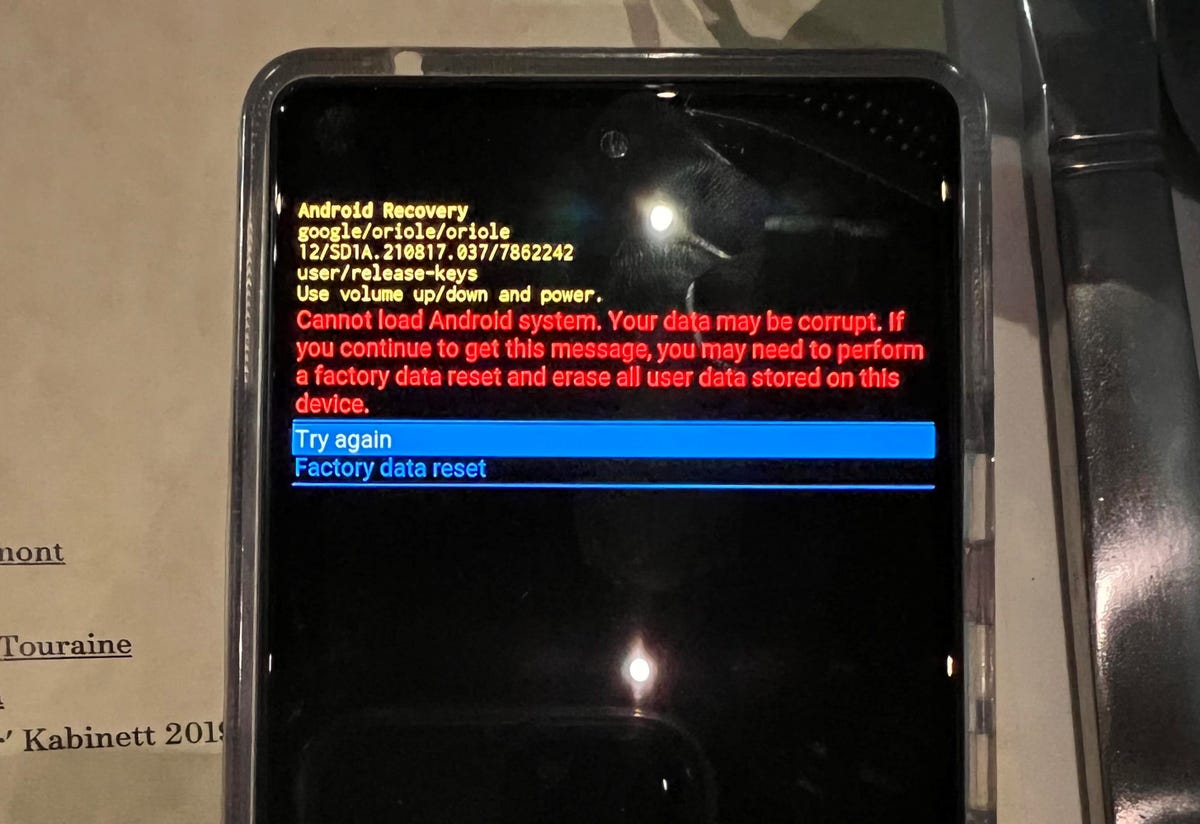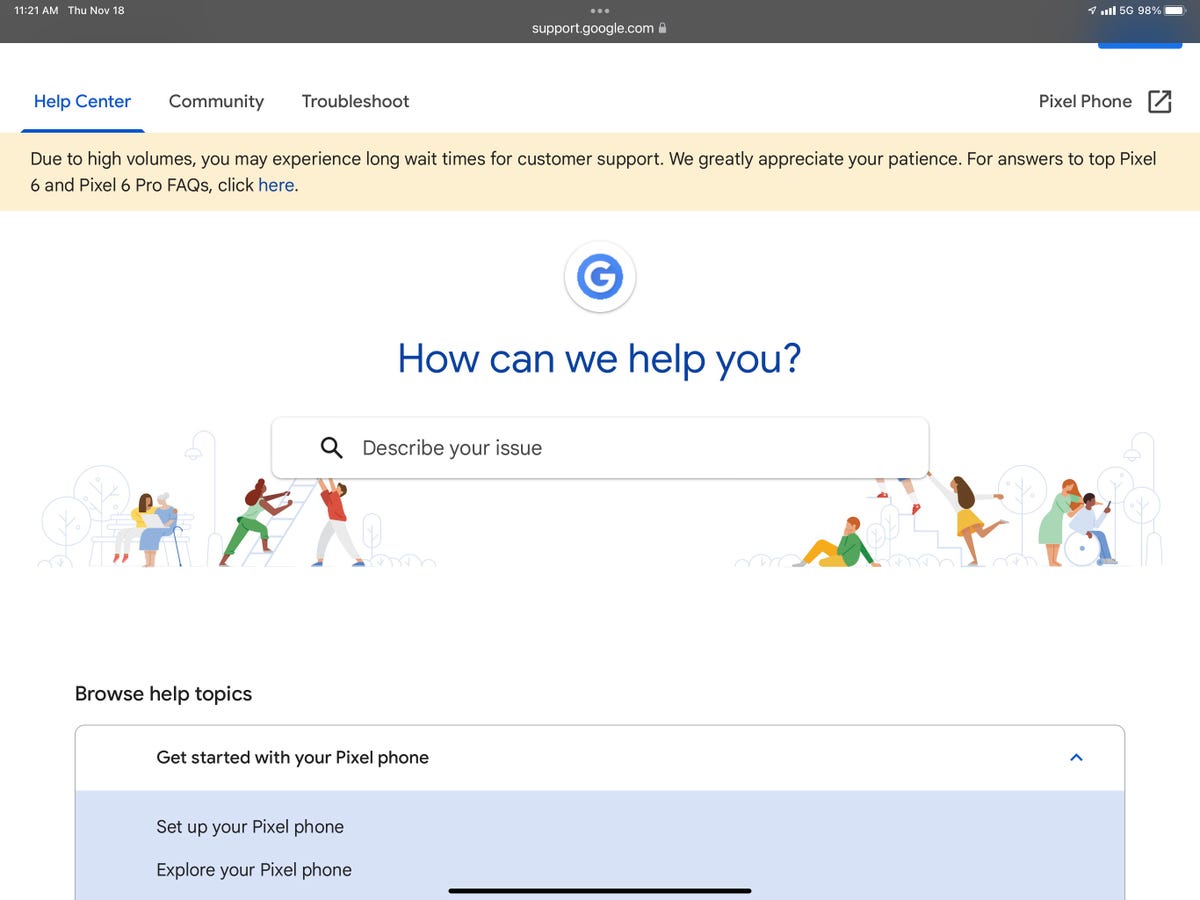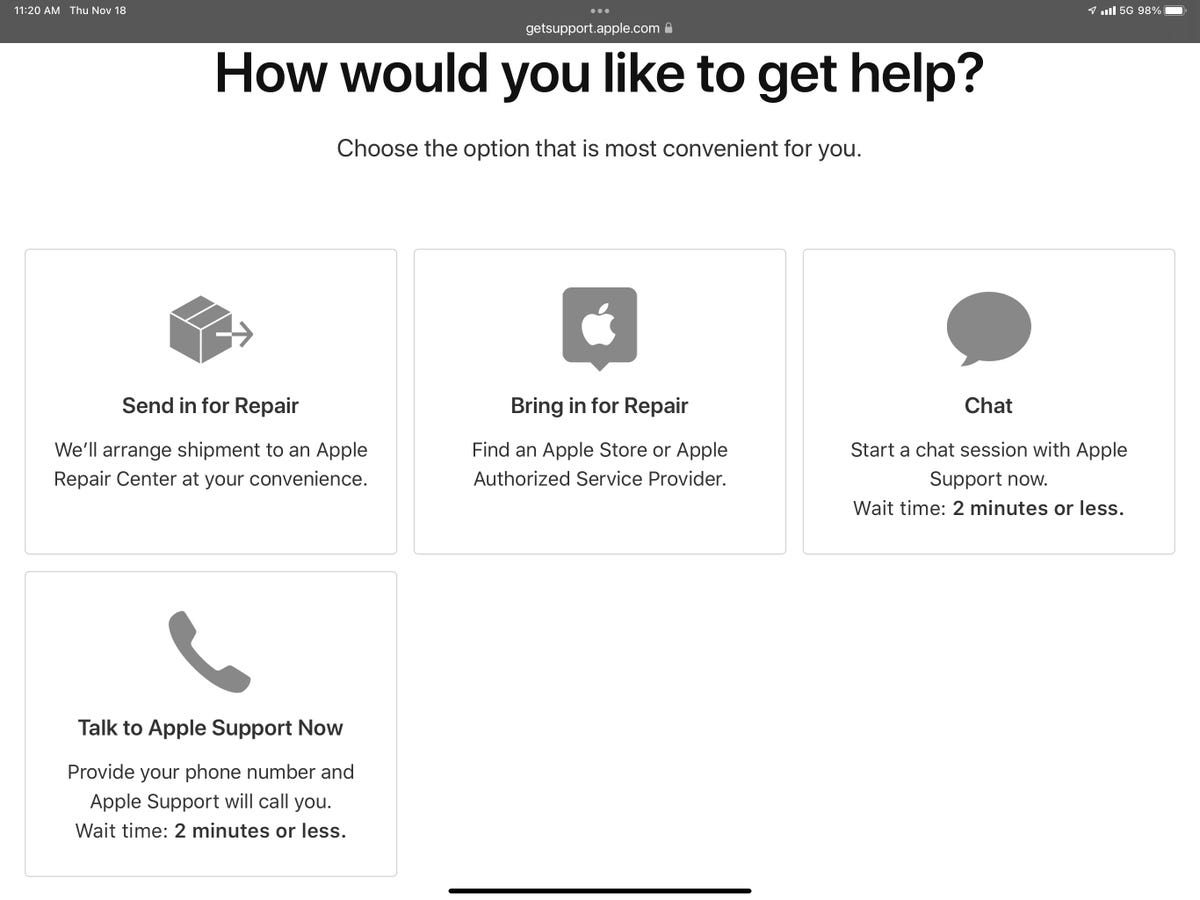I wouldn’t normally be writing a ZDNet piece this week as I am on vacation in New Orleans — and enjoying the sights, food, music and culture. To photo chronicle my week in the Big Easy, I brought two smartphones with me, my
iPhone 13 Pro Max
and my
new Google Pixel 6
.
Shortly after setting up the Pixel 6 a few weeks ago — while the product could still be returned — I experienced an issue where the OS received an initial over-the-air update and when it rebooted, it came up in recovery mode, being unable to read the file system — and it forced a factory reset. So I had to set up the phone again from a backup less than a day after the initial setup. I dismissed this initial problem as a first-day or first-week glitch for a new product and continued using the device.
Several weeks have gone by, and I’m on vacation with the phone, having taken a few hundred photos with it. Google sent another over-the-air update this week, which I accepted. The same thing happened — the device rebooted, it entered recovery mode, and it forced a file system factory reset. The photo of my screen when this occurred is below.

Jason Perlow
Look, maybe this is just bad luck with a phone, but had I known this was going to be a problem child device, I would have returned it for a full refund and waited a few months to get something else with Android 12 on it. As far as I am concerned, this should never happen with Google’s flagship Android developer device. I’m now out of the product return window, with device replacement as my only official option if the company deems it to be defective and this just isn’t a result of their software stack also being garbage.
Last night, around 8pm EST, the first thing I tried to do was to contact Google’s device support on its store website — which is probably the most labyrinthian tech support system I have ever seen for a mobile hardware product. It’s this layered, AI-driven system that keeps suggesting resolutions that the end-user can do that are totally unrelated to my problem and totally avoids putting you in touch with a human being.
You can’t call Google directly if you have a problem with your Pixel — you have to make it through that crazy decision tree to the point where you can request a callback, which after about 15 minutes of typing in “this piece of crap is defective and my file system is hosed”, it finally let me do.
When my callback came about 30 minutes later, I got a computerized attendant which told me I needed to wait, and I finally got a human. When I explained to her what was going on, she said, “Oh, that’s a technical issue; I need to put you in touch with technical support.”
Right.
So then she puts me on hold for 10 minutes. She comes back. “They are still busy; I am so sorry. Can I put you on hold for a few more minutes?” I said yes. This process repeated about three times, but the wait music went dark on the third try, and the connection dropped. I had no way to call back in and get back on the queue.
So what did I do? I went through the decision tree thing again on the website, and after another 10-15 minutes of bungling the responses, I requested another callback. This resulted in another call back about half hour later. I went on hold again, waiting for another 1st-level human, and the connection dropped again.
I tried the decision tree again, and then it told me support hours were over and to try again tomorrow. I am now waiting for someone from Google to call me back.

Screenshot Jason Perlow
If Google wants to position the Pixel as the company’s iPhone, then it needs to match the product on more than just hardware features. It needs to improve its customer service and support infrastructure vastly. Not being able to easily get in touch with a human by phone when dealing with a severe issue like this is frustrating. If I did not have my iPhone with me on this trip, and I was not in a good data coverage area or had access to Wi-Fi, I would have lost all the data on my device (which I did) and not be able to cloud restore it. As it happened, I had my other phone with me as a backup and was in a 5G coverage area with an unlimited AT&T plan. But not everyone is going to be so fortunate.
By comparison, Apple has much better support — not only does it have a better support queue system, but it also has retail store locations, whereas Google doesn’t. While Apple also uses a decision tree for remote support, it’s about one click away from a “we will call you” support call, and the wait times are disclosed at about two minutes. I know from experience that it is that short because my wife had to call in during the pandemic with an issue, and they were on the phone in no time — and Apple provided direct call numbers to call back for follow-ups.

Apple’s support interface is clear.
Screenshot Jason Perlow

Right now, I have a real sour taste in my mouth from Google. If I could return this buggy and unstable device for a refund now, I would — and in fact, I’ve already filed a dispute with my credit card company. But currently I’m stuck with the device and hoping the company will, on its own, make good on a refund as it was clearly defective during the original return period, not just experiencing a widespread bug.
Stay connected with us on social media platform for instant update click here to join our Twitter, & Facebook
We are now on Telegram. Click here to join our channel (@TechiUpdate) and stay updated with the latest Technology headlines.
For all the latest Technology News Click Here
For the latest news and updates, follow us on Google News.
